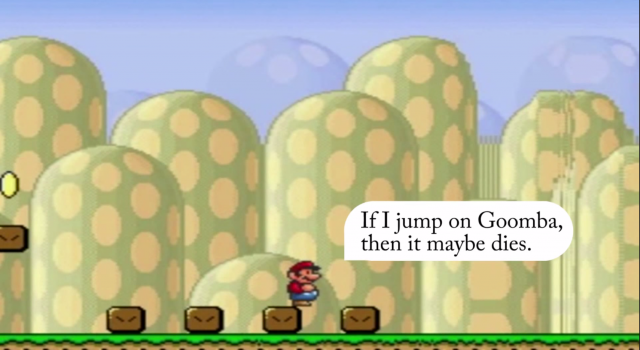
The project essentially automates a 2D platformer hero’s behavior according to four “emotional” matrices: hunger, happiness, curiosity, and fear. For its demonstration video, the research team employed a modified version of Super Mario World that uses the SNES classic’s sprites on custom stages—and played a piano-ditty version of the original Super Mario Bros. 1 theme for nostalgic kicks—then added a voice-recognition system so that testers could tweak Mario’s emotions on the fly.
“Mario, don’t feel so happy,” the demonstrator said early in the video, and his happiness chart dipped accordingly. The full gamut of emotional responses wasn’t explained in the video, but the narrator stated that higher “curiosity” rankings would make the auto-controlled Mario more likely to poke around every corner of a level, while higher “hunger” would drive Mario to collect more coins.
Demonstrators could also give Mario useful—or harmful—information, such as telling him that jumping on a Goomba kills it or, conversely, that running into moving turtle shells makes you stronger (gah, that is, like, so categorically untrue!). This version of Mario takes everything it’s told at face value, then comes up with its own impressions of the world based on real-world successes and failures—all of which can be parroted back to a viewer if he or she asks Mario any probing questions.
via Ars Technica






